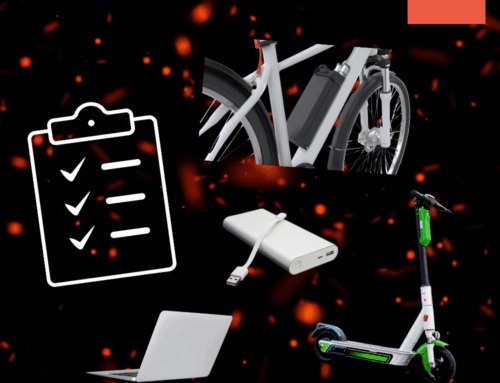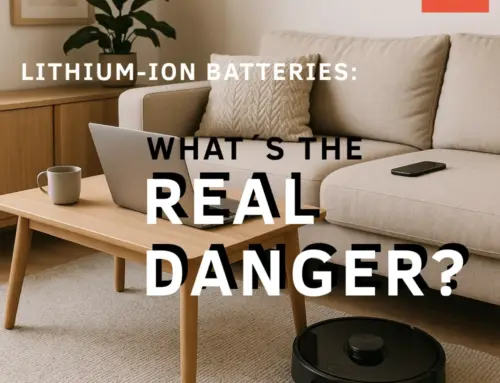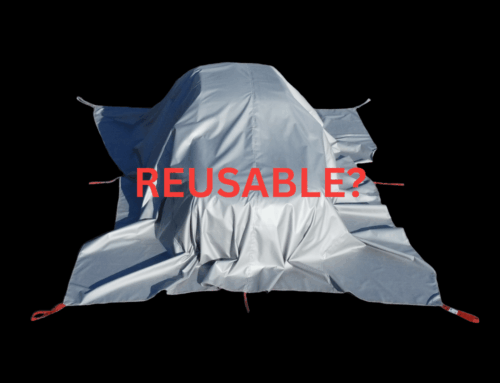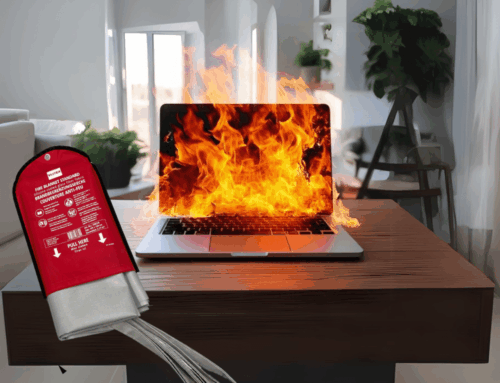
Lithium-ion batteries have become an integral part of our everyday lives. They power electric cars, e-bikes, smartphones and many other devices. However, as they become more widespread, the challenges for fire departments in the event of fires involving these energy storage devices are also increasing. In this article, we shed light on the risks, special features and solutions for dealing with burning lithium-ion batteries.
Table of contents
What makes lithium-ion battery fires so dangerous?
- Thermal Runaway:
The so-called thermal runaway is a chain reaction in which an overheated cell ignites and causes neighboring cells to react. This leads to explosive fires with extremely high temperatures of up to 1,300 °C. - Oxygen-independent fires:
The battery contains all the necessary components for a fire so that oxygen from outside is not required. This often makes extinguishing fires using conventional methods such as water or foam ineffective. - Re-ignition:
Even after an apparent extinguishing, batteries can re-ignite due to residual heat or chemical reactions - sometimes even days later. - Exploding cells:
Lithium-ion cells can burst during a fire and hurl dangerous, flaming parts for meters. These pose an additional risk to emergency services and the surrounding area.
Challenges for the fire department in action
The fire department faces particular problems with fires involving lithium-ion batteries:
- Increased water requirement:
Tens of thousands of liters of water are often required to cool a burning battery. For example, Tesla specifies up to 12,000 liters of extinguishing water for a vehicle fire. This poses logistical challenges, especially for operations in remote areas. - Toxic fumes:
Lithium-ion batteries release a variety of toxic gases when they catch fire, including hydrogen fluoride and other chemical compounds that are hazardous to humans and the environment. - Complex extinguishing operations:
Access to the battery modules is often difficult with electric vehicles, as the batteries are installed in the underbody or in areas that are difficult to reach. - Disposal:
The extinguishing water is contaminated by chemical residues and must be disposed of as hazardous waste.
- Aftercare and storage:
After extinguishing, damaged batteries must be stored safely to prevent re-ignition. Suitable storage locations or protective measures are often lacking here.
You can find out more about the specific challenges of battery fires and the importance of fire blankets in our article on containing battery fires with VLITEX Fire blanket.
Solutions and modern tools
- fire blankets:
Specially developed fire blankets like the VLITEX E-AUTO are an effective solution to protect the surrounding area from flames, heat and flying debris. They contain the fire without requiring large quantities of water and facilitate safe storage after use. - Extinguishing lances:
These are inserted directly into the battery to spray water or extinguishing agent directly onto the burning cells. However, this method is technically demanding and requires precise placement. - Operational training:
Fire departments must be regularly trained in handling lithium-ion batteries. This includes both theoretical knowledge about the chemical processes and practical exercises with modern equipment. - Safe storage:
After use, damaged batteries can be stored safely in specially developed containers or with the help of fire blankets . This prevents re-ignition.
Prevention: what everyone can do
Users can take the following measures to prevent lithium-ion batteries from catching fire:
- Correct storage: Do not expose batteries to extreme temperatures and protect them from shocks and damage.
- Check for damage: Have visible defects or swelling checked immediately.
- Use certified chargers: Do not use cheap or inferior chargers.
Challenges and solutions for the fire department
Dealing with burning lithium-ion batteries is one of the biggest challenges facing firefighters today. The extreme temperatures, the risk of re-ignition and the toxic fumes make such fires particularly demanding. However, with modern tools such as fire blankets, special extinguishing systems and regular training, emergency services can respond effectively to these risks.
The increasing use of lithium-ion batteries in electric vehicles and other devices shows how important it is to continuously develop innovative solutions to protect people and the environment.








